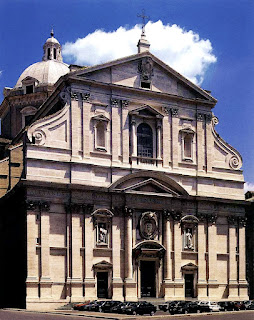Now let us glide over to Italy and
Flanders to study the art which was being produced there during this time. Italy and Flanders remained Catholic after
the schism of the Reformation, and they were a leading center for the Counter
Reformation, which was an effort by the Catholic Church to lure people back to
regain its former power. We have already
been seeing this. Murillo's Return of
the Prodigal Son as well as even Velàzquez's
Surrender of Breda are works exemplifying the style and tone of the Catholic
Church's Counter Reformation. This type
of artwork supported the Catholic Church and discouraged heresy. The church sought the newest and best artists
to bring people back. Many artists were
sent to Rome to create these works that would restore the religious spirit in
the Western world. And so we look to
Rome, Italy, and Flanders to observe what was really the headquarters of the
Counter Reformation. We already looked
at a couple or more works from there when we looked at Mannerism.
The art of this time, as we know,
was characterized by more action, increased excitement, vivid, dramatic
lighting effects of contrasting lights and darks, and motion and emotion;
however, the architecture also underwent stylistic changes. The Roman church Il Gesú features huge, sculptured
scrolls which magnificently exemplify Baroque style. The Baroque period had a distinct
architectural style. It introduced
convex and concave push and pull. The
interests were in movement, contrast, and variety. It contained great importance of feelings
expressed, and it brilliantly captured drama.
It has been said that Baroque art did not so much focus on beauty. In actuality, the artists overwhelmed and
quite possibly confused their viewers with a blended world that mixed reality
and imaginary imagery. This is the
façade of the building (a façade is simply the front of any cathedral
structure).

No comments:
Post a Comment